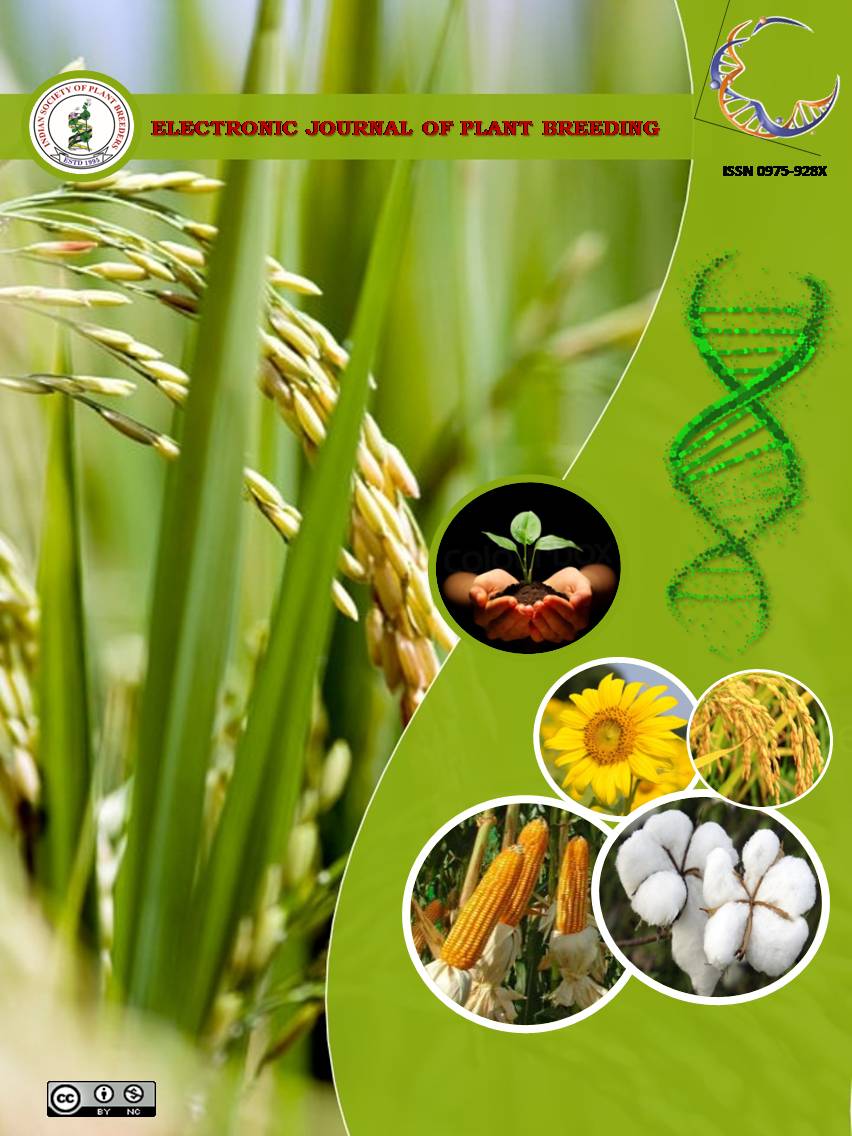Combining ability analysis over environments in bread wheat
Abstract
Thirty-eight genotypes of wheat including 8 parents, their 28 F1s and 2 checks evaluated in 4 different environments i.e. early sown, normal sown, late sown and very late sown conditions was undertaken to study the combining ability in bread wheat for grain yield and its component traits. From pooled analysis, it was found that mean square due to GCA and SCA were significant for all characters which revealed difference between parents for GCA and difference between crosses for SCA. Significant mean square for GCA x E and SCA x E for proline content, chlorophyll content, chlorophyll stability index and heat injury was observed. In addition, SCA x E for grain yield was also significant. This suggested that additive and non-additive genetic components were sensitive to environments. Variance for GCA was higher than their respective SCA variance for grain yield per plant, leaf canopy temperature, proline content and chlorophyll stability index which suggested that additive component was less stable over the environment than dominant component. Parents HD 2987 was good general combiners for grain yield over different environments. Cross HI 1544 x HD 2987 was the best specific combiner for grain yield per plant followed by HI 1544 x RAJ 4079.

It is certified that:
- The corresponding author is fully responsible for any disputes arising due to the publication of his/her manuscript.
- The article has been seen by all the authors who are satisfied with its form and content.
- The sequence of names of authors in the by-line is as per their relative contribution to this experiment, giving due credit to all scientists who made notable contribution to it.
- All the authors fully understand that inclusion of any other co-authors or exclusion of any co-authors is not possible once the article has been submitted to the journal.
- The corresponding author takes full responsibility for this article.
- The address of the organization where the research was conducted is given.
- The article is exclusive for this journal, and the results reported here have not been sent (and will not be sent during its consideration by this journal) for publication in any other journal.
- Authors agree to abide by the objective comments of referees and do agree to modify the article into a short note as per the recommendation, for publication in the Electronic Journal of Plant Breeding.
- If published in Electronic Journal of Plant Breeding, the copyright of this article would vest with the Indian Society of Plant Breeders, who will have the right to enter into any agreement with any organization in India or abroad engaged in reprography, photocopying, storage and dissemination of information contained in it, and neither we nor our legal heirs will have any claims on royalty.


